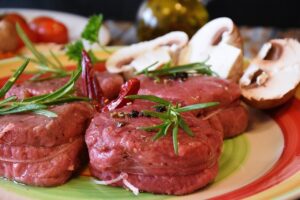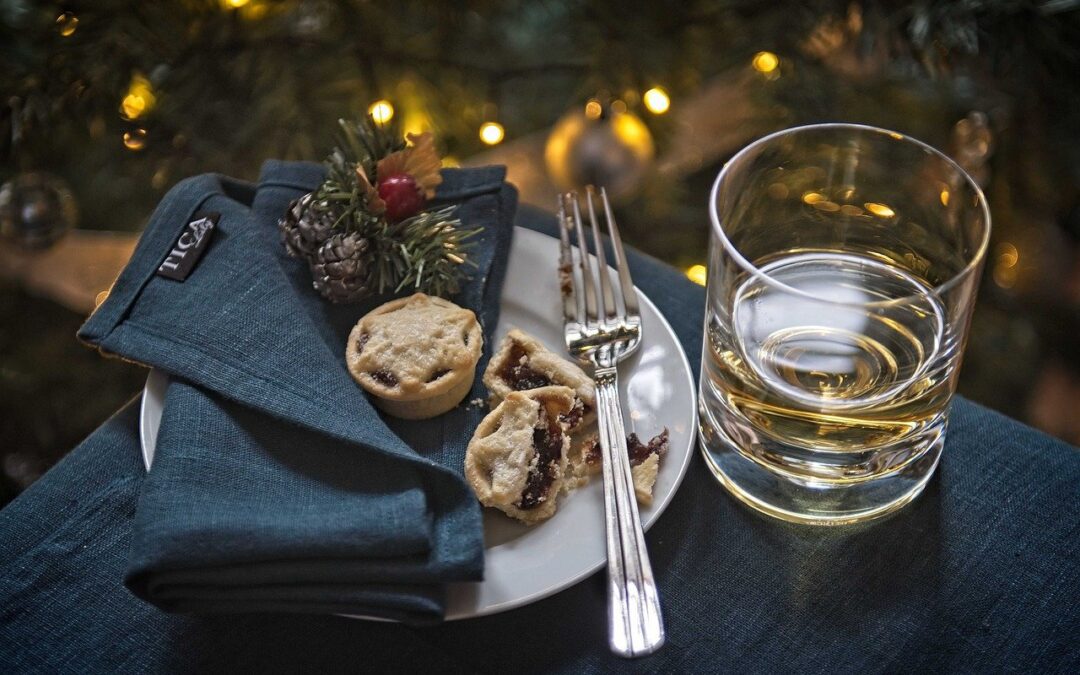By Bob Lipinski
“Happiness is having a rare steak, a bottle of whisky, and a dog to eat the rare steak.” (Johnny Carson, 1925-2005, American television host and comedian)
Whiskey, a brown-colored distilled spirit, is made in over 50 countries and enjoyed by millions. Whiskey, by definition, is an alcoholic distillate made from a fermented mash of various grains distilled at less than 190-proof. Whiskeys are distinguished by the grain used, the proof at which the mash is distilled, and the age.
The major categories of whiskey produced globally are American Blended, Bourbon, Canadian, Corn, Irish, Japanese, Rye, Scotch, and Tennessee.
Enjoying whiskey with food
When looking for a whiskey to pair with food, there are many things to consider… different countries, grain blends, “peated” versus “unpeated barley,” proof levels, and types of whiskey (blended, malt, straight), cask strength, single barrel, small batch, and so forth. Also, how long the whiskey was aged in wood, type of wood used for aging, and “finishing” woods, which are popular among distillers. As much as 60 to 70 percent of the aroma and flavor of whiskey comes from the aging process in new, charred barrels (less for second-use barrels).
Finishing woods: After traditional aging of whiskey in oak barrels, some distillers continue aging their whiskey in other barrels that formerly were used to age Calvados, Cognac, Rum, Bordeaux, Burgundy, Madeira, Marsala, Port, Sauternes or Sherry wine. These barrels, called “finishing woods,” add subtle aroma and flavor enhancements to the spirit. It is common to have a distilled spirit aged in several types of finishing woods, which adds to the aroma and taste profile of the product.
Whiskey is a wonderful beverage regardless of if it is spelled “whiskey” or “whisky.” It mixes well with water, seltzer, cola, and ginger ale, and a base for countless recipes and concoctions. But yet how many people enjoy whiskey with food? Basically, there is a general lack of knowing how to pair whiskey with food and which whiskies to use.

Whiskey and Food
Look for similarities in the smell and taste of the whiskey and the food to be paired. As an example, most whiskey has an aroma and flavor of nuts (derived from barrel aging), so a dessert containing nuts (almonds, hazelnuts, pecans, walnuts, and so forth) would be a good match.
Other aroma and flavor descriptors found in whiskey are:
Whiskies that have aromas and flavors of chocolate, cocoa, mocha, caramel, toffee, butterscotch, brown sugar, maple sugar, and ginger can be enjoyed with a multitude of foods, especially desserts and various sauces.
Whiskies that have fruit aromas and flavors like apple, apricot, banana, citrus, dates, figs, honey, melon, orange, pears, plums, and raisins can be paired with meats and poultry containing fruit glazes.

Steak
Whiskies that have aromas and flavors of spices, such as black and white pepper, cinnamon, cloves, cumin, and nutmeg, are great for meats with dry rubs.
Whiskies with aromas and flavors of oak, vanilla, smoke, black coffee, and toasted nuts pair with smoked, grilled, and blackened meats, pulled pork, and smoky mushrooms. Other foods to pair with smoked elements are most smoked fish, cheese, turkey, and game, and briny oysters with a smoky-briny Scotch whisky.
“There is no bad whiskey. There are only some whiskeys that aren’t as good as others.” (Ray Chandler, 1888-1959, American novelist and screenwriter)
Bob Lipinski, the author of 10 books on alcoholic beverages and food, consults and conducts training seminars on Wine, Spirits, and Food, and is available for speaking engagements. He can be reached at www.BobLipinski.com OR Bob@BobLipinski.com


 Bob Lipinski, author of 10 books; writes, consults, and conducts training seminars on Wine, Spirits, and Food and is available for speaking engagements.
Bob Lipinski, author of 10 books; writes, consults, and conducts training seminars on Wine, Spirits, and Food and is available for speaking engagements.
Recent Comments